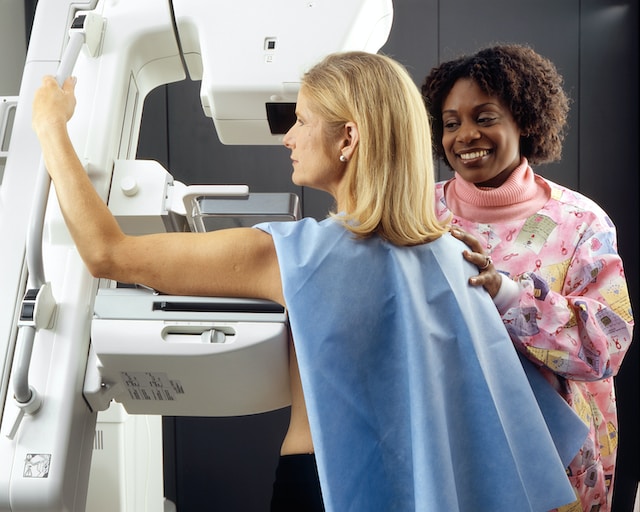Up to half of older Australian women have such dense breasts, detecting cancerous tumours becomes as difficult as finding “a polar bear in a snow storm”.
Breasts are made up of a combination of fatty tissue and fibroglandular tissue, which includes the glands and ducts that support breastfeeding.
Fatty tissue shows up on a mammogram as grey, while fibroglandular tissue shows up on a mammogram as white – much the same as a tumour, making spotting a cancerous growth difficult.
As many as half of Australian women between 40 and 75 are thought to have dense breasts.
“Imagine Where’s Wally,” said Perth radiologist Vanessa Atienza-Hipolito, who has assessed the breast density of some 55,000 patients over the past decade at her Women’s and Breast Imaging clinic in Perth.
“(In) a fatty breast, it is easy to find Wally.
“But if Wally is in an extremely dense breast, (it’s like) you’re looking at a cloudy sky – how are you going to see the sun, the moon and the stars?”
Frustratingly, there is no way to tell by look or feel, weight or shape, whether a woman has dense breasts, Dr Atienza-Hipolito says.
Having bigger or smaller breasts, or being over or underweight will only affect the amount of fatty tissue that makes up the breast, she explains. The fibroglandular tissue will present with the same issue regardless.
“It’s all about the ratio,” she told AAP.
“(But) there is nothing wrong with having dense breasts – it’s just normal anatomy.”
Dr Atienza-Hipolito says she has been advocating for breast density to be investigated as part of regular breast screening for more than a decade.
At her clinic, she analyses raw mammography images using AI software called Volpara to generate a quantitative measurement of breast density for her patients.
Patients who are found to have dense breasts are then referred for a follow-up ultrasound, which will detect cancers the mammogram may miss.
That can make the difference between detecting a growth early, when it’s the size of a grain of rice, and later, when it has a much higher mortality rate.
In an ideal world, every woman over the age of 40 with dense breasts should be offered an ultrasound as well as a mammogram at their screening, she says.
South Australia recently joined Western Australia as the only states in Australia to notify women of their breast density in their public screening programs. South Australia’s program is the first to use Volpara, but Queensland is also using Volpara in a randomised trial.
About one in seven Australian women will be diagnosed with breast cancer in their lifetime, according to Breast Cancer Network Australia, although the nation has one of the best survival rates in the world.
Katelyn Catanzariti
(Australian Associated Press)





